Dundubia vaginata (Fabricis, 1787) with a missing abdomen. The photo was taken in Malaysia. The photographer wishes to be anonymous.
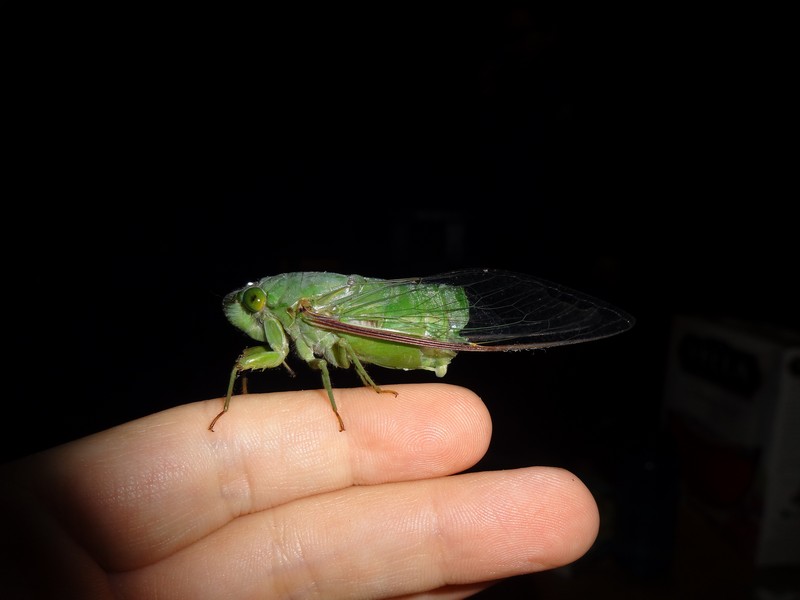
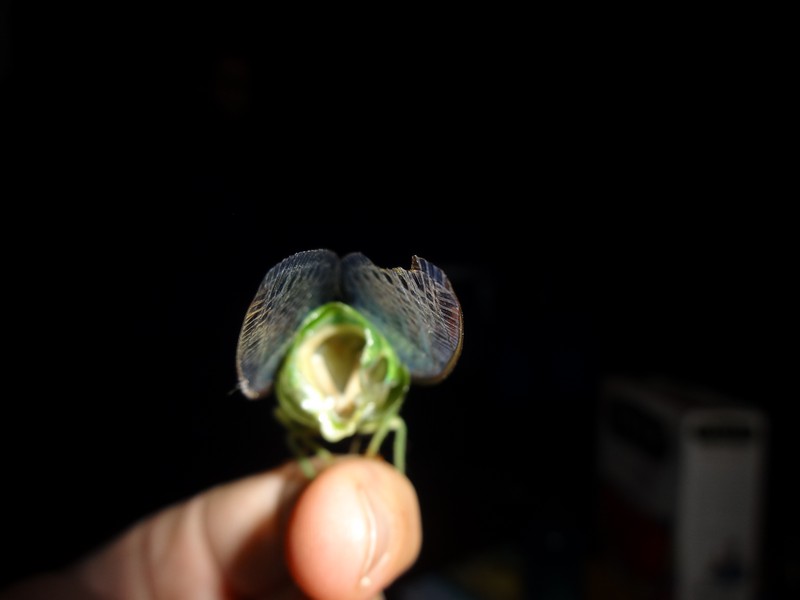
Dedicated to cicadas, the most amazing insects in the world.
Dundubia vaginata (Fabricis, 1787) with a missing abdomen. The photo was taken in Malaysia. The photographer wishes to be anonymous.


Tacua speciosa (Illger, 1980) photos taken in Malaysia. The author of the images wishes to be anonymous.
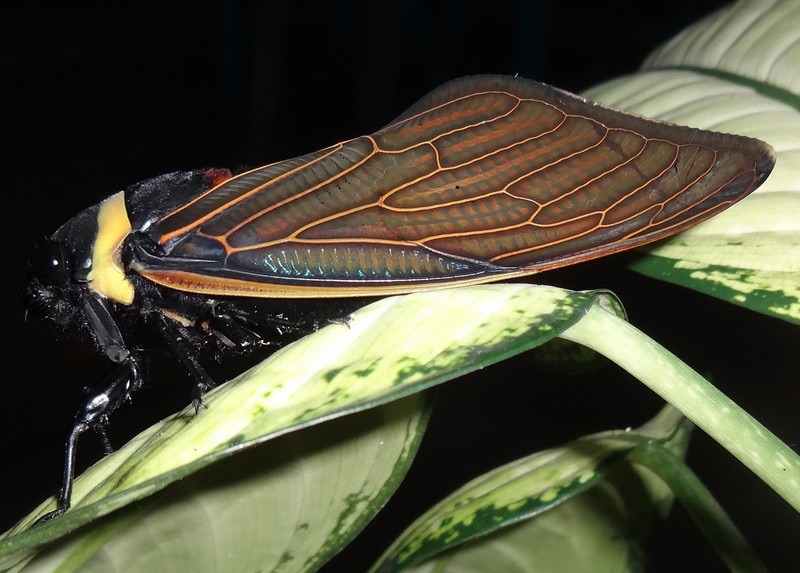
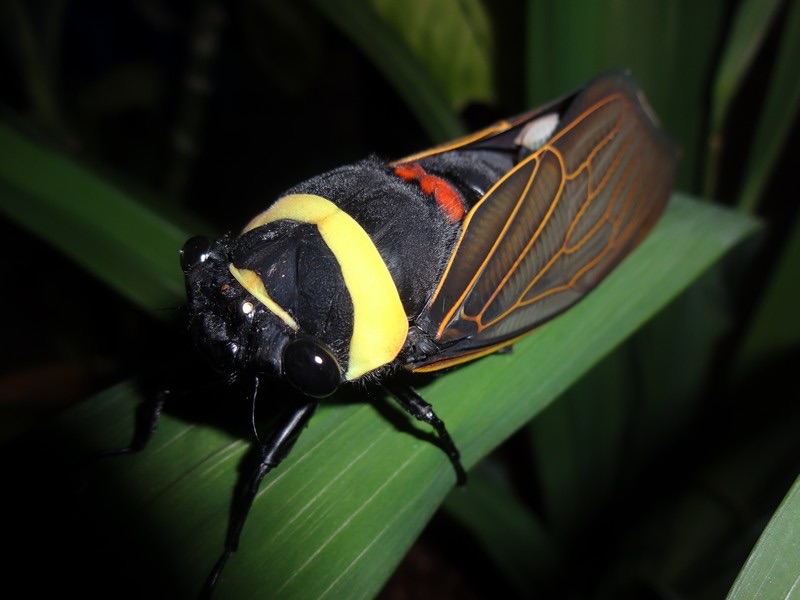
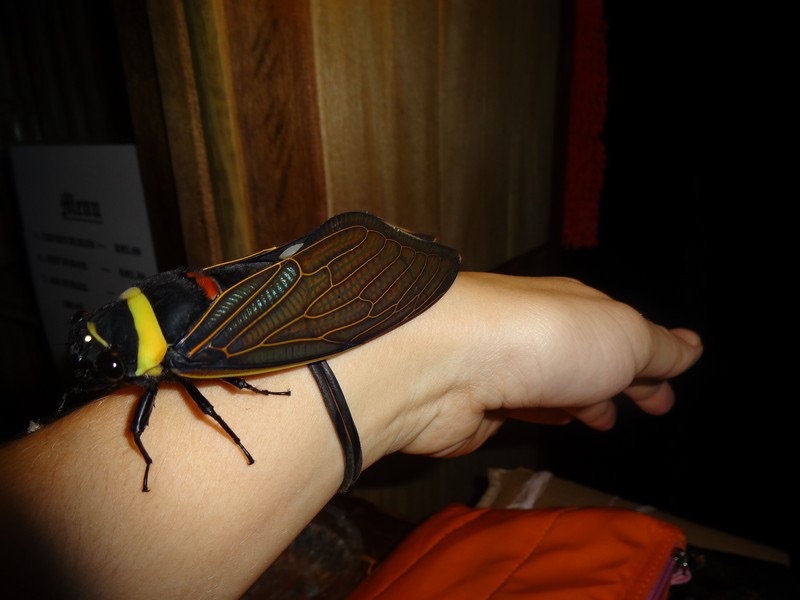
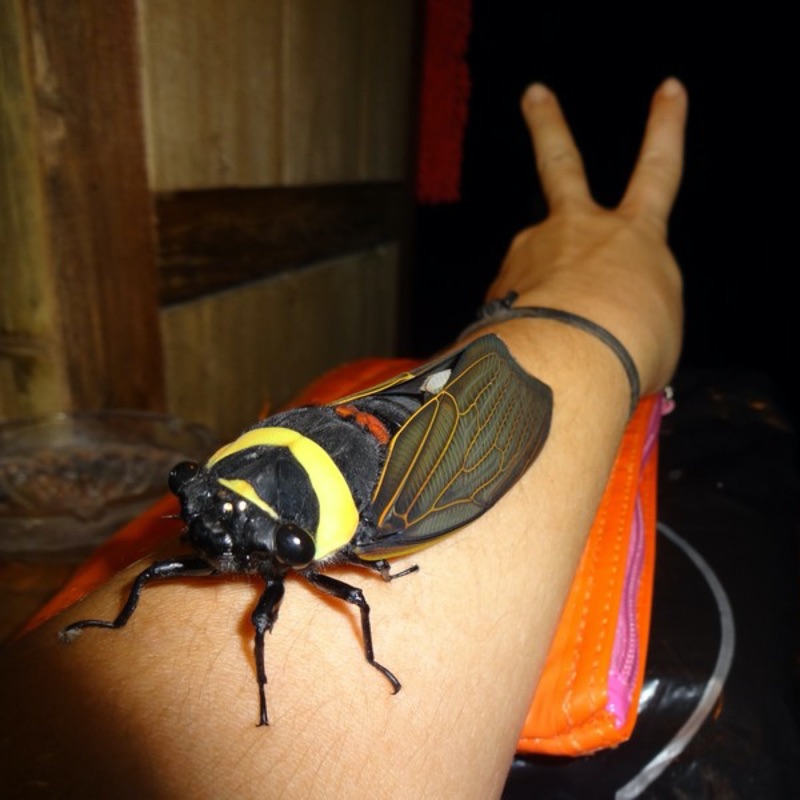
Platypleura mira is a cicada found in Cambodia, Laos, Malasia, Thailand, and Vietnam.
Photo by Michel Chantraine:
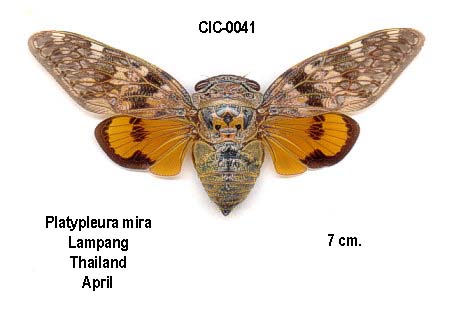
Scientific classification:
Family: Cicadidae
Subfamily: Cicadinae
Tribe: Platypleurini
Genus: Platypleura
Species: Platypleura mira Distant, 1904
Orientopsaltria beaudouini is a cicada found in Malasia and Thailand.
Photo by Michel Chantraine:
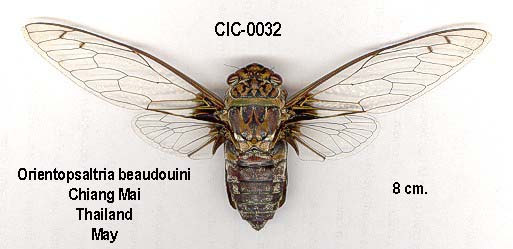
Scientific classification:
Family: Cicadidae
Subfamily: Cicadinae
Tribe: Dundubiini
SubTribe: Orientopsaltriina
Genus: Orientopsaltria
Species: Orientopsaltria beaudouini Boulard, 2003
Trengganua sibylla (Stål, 1863) is a cicada found in south-east Asia, specifically peninsular Malaysia and Thailand.
When found in the wild & alive its wings are green and black, but the green turns yellow after death.

Here’s a video of a living T. sibylla.
Scientific classification:
Family: Cicadidae
Subfamily: Cicadinae
Tribe: Gaeanini
Genus: Trengganua
Species: Trengganua sibylla (Stål, 1863)
Megapomponia intermedia is a cicada found in Cambodia, Indonesia, Laos, Nepal, Malaysia, and Thailand.
Photo by Michel Chantraine:
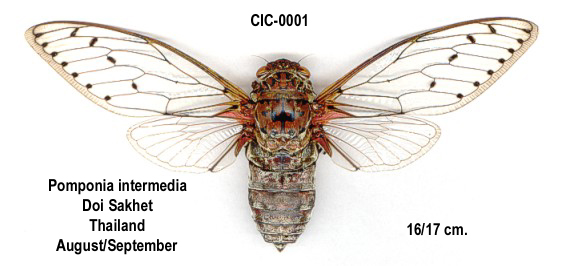
Note: the image reads Pomponia intermedia, but since the time the photograph was taken the name of the cicada has changed to Megapomponia intermedia.
Scientific classification:
Family: Cicadidae
Subfamily: Cicadinae
Tribe: Dundubiini
SubTribe: Megapomponiina
Genus: Megapomponia
Species: Megapomponia intermedia (Distant, 1905)
Megapomponia imperatoria is a cicada found in Cambodia, Indonesia, Laos, Malaysia, Nepal, and Thailand. This is the largest cicada in the world
Photo by Michel Chantraine:
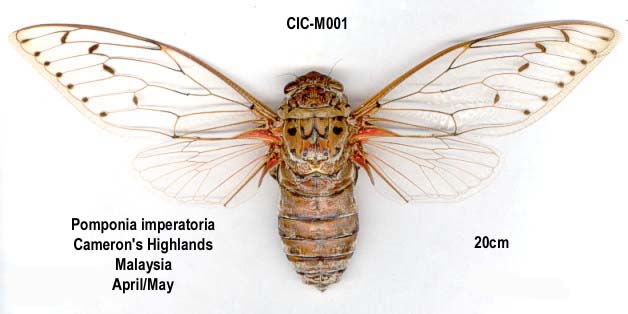
Note: the photo reads “Pomponia imperatoria”, but since the time of the photograph the name of the cicada has changed.
Description 1:
Body above brownish-ochraceous, in some specimens castaneous. Head with a central longitudinal spot to the front, the area of the ocelli, a transverse spot behind eyes, and a spot at anterior angles of vertex, black. Pronotiim with two central longitudinal linear fasciae not extending beyond center — a central spot at the posterior margin — and the furrows black; posterior margin greenish, with two black spots on each side. Mesonotum with two obconical central spots, from the junction of which a longitudinal fascia extends to posterior margin, four spots in transverse series at the base, a spot on each lateral discal area, and sometimes some small spots at anterior margin black. Abdomen with the posterior margins of the abdominal segments narrowly black. Body beneath and legs brownish-ochraceous; transverse striations and the apex of the face, anterior tibiae, bases, and apical thirds of the intermediate tibiae, anterior and intermediate tarsi and the apex of the rostrum, black.
Tegmina and wings pale hyaline, the venation ochraceous. Tegmina with the costal membrane and basal cell brownish or ochraceous, the claval area ochraceous or sanguineous; the transverse veins at the bases of the second, third, fifth, and seventh apical areas infuscated and a series of fuscous marginal spots at the apices of the longitudinal veins to apical areas. Wings with the base of claval area ochraceous or sanguineous; outer margin of claval area ochraceous.
Long. excl. tegm. Male 46 to 68 millim. ; Female 41 to GO millim. Exp. tegm. Male 137 to 180 millim. ; Female, 145 to 216 millim.
This is a most variable species, both as regards size and markings. The largest specimen I have yet seen is a female in my o\vn collection from Perak, whose tegmina reach an expansion of 216 millim. In some of the smaller specimens, the body is darker, and the markings to same and the spotting of the tegmina very indistinct. There almost seem to be two races of this species, one very much smaller and somewhat less prominently marked than the other.
As I have elsewhere recorded, I captured this fine species myself, not infrequently, when sojourning in the Malay Peninsula. It often frequented the dining-room, and on holding it between the fingers its stridulation caused a thrill through the nerves of the arm.*
Scientific classification:
Family: Cicadidae
Subfamily: Cicadinae
Tribe: Dundubiini
SubTribe: Megapomponiina
Genus: Megapomponia
Species: Megapomponia imperatoria (Westwood, 1842)

Can you identify this cicada from Kota Kinabalu, Malaysia? The photo was taken by photographer Karim Madoya.
Update: here’s what it is: Cryptotympana aquila.
Scientific classification:
Family: Cicadidae
Subfamily: Cicadinae
Tribe: Cryptotympanini
SubTribe: Cryptotympanina
Genus: Cryptotympana
Species: Cryptotympana aquila (Walker, 1850)
Dundubia spiculata is a cicada found in China, Burma, Thailand, Laos, Vietnam, Cambodia, and Malaysia.
Photo by Michel Chantraine:
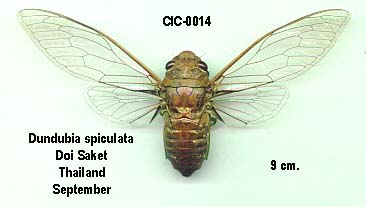
Scientific classification:
Family: Cicadidae
Subfamily: Cicadinae
Tribe: Dundubiini
SubTribe: Dundubiina
Genus: Dundubia
Species: Dundubia spiculata Noualhier, 1896
Cryptotympana aquila is a cicada found in Indonesia, Malaysia, Brunei, Thailand, and likely adjacent nations.
Photo by Michel Chantraine:
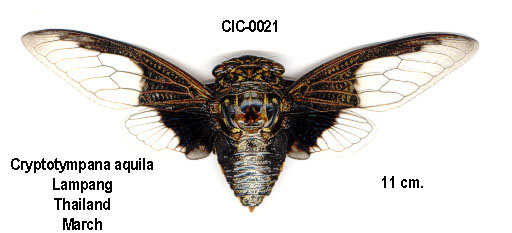
This description comes from A Monograph of Oriental Cicadas by W. L. Distant. 1889-1892. Read it on the Biodiversity Heritage Library website.
Male: Body above black; eyes ochraceous; ocelli luteous. Pronotum with some indistinct discal markings and the posterior margin pale castaneous. Mesonotum with a central triangular linear fascia, on each side of which is an irregular and inwardly notched fascia, and the basal cruciform elevation, pale castaneous. Abdomen black, the lateral margins fringed with pale castaneous pile. Body beneath very pale castaneous; the face, anterior margin of the head between face and eyes, and basal abdominal patch, black. Anterior legs black, the femera streaked with pale castaneous; intermediate legs with the femora black streaked with pale castaneous, the tibis pale castaneous with their bases and apices black; posterior legs pale castaneous, the bases and apices of femora and tibiae black.
Tegmina and wing pale hyaline; tegmina with the venation and the costal membrane pale castaneous, the extreme basal margin of the last black; the basal third (excluding venation) and the subcostal area to apex, blackish; wings with about basal half obliquely black.
The body is robust but moderately elongate; the opercula do not overlap at their basal margins, and at a short distance from base become widely divergent and narrowed to apices, their outer margins slightly concavely sinuate and in length, they extend a little beyond the middle of the abdomen.
Long. excl. tegm. Male, 40 to 45 millim. Exp. tegm. 115 to 120 millim.
Scientific classification:
Family: Cicadidae
Subfamily: Cicadinae
Tribe: Cryptotympanini
SubTribe: Cryptotympanina
Genus: Cryptotympana
Species: Cryptotympana aquila (Walker, 1850)